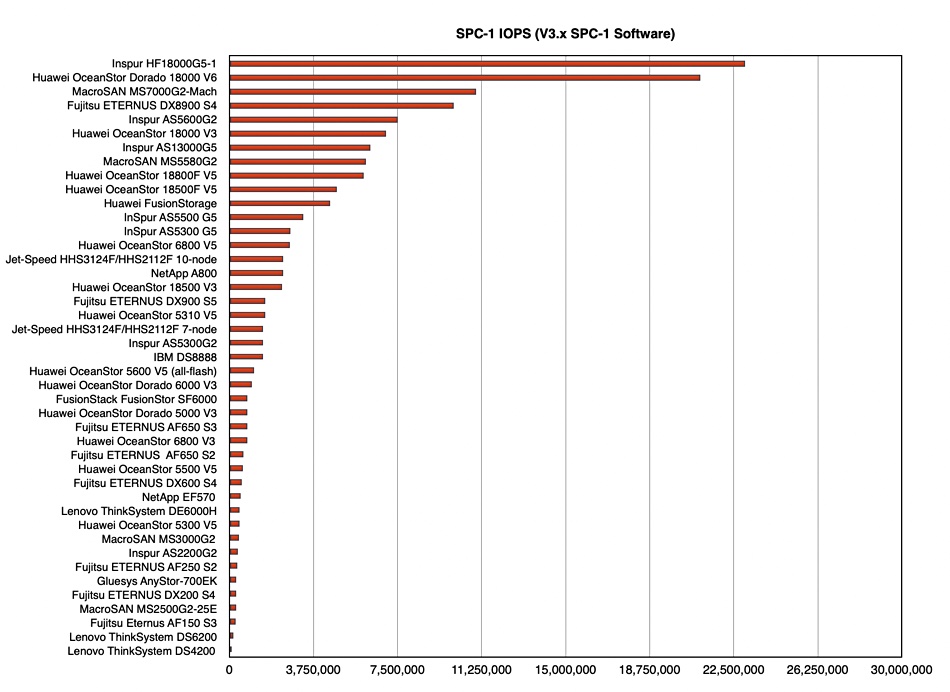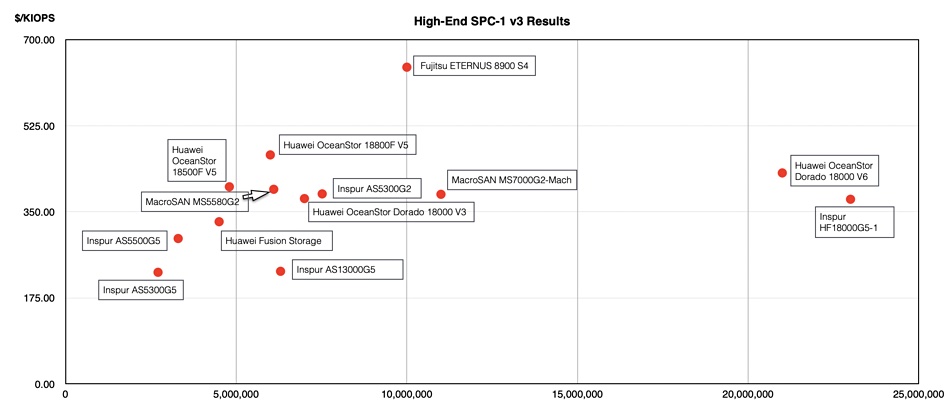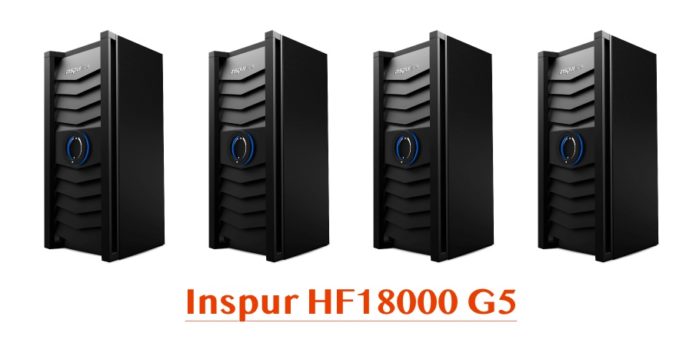A clustered 16-controller Inspur storage array system using Optane and NVMe SSDs has set an SPC-1 performance world record, overtaking Huawei.
The Storage Performance Council’s SPC-1 benchmark tests the performance attributes of a storage array responding to business-critical workload IO requests. It measures SPC-1 input/output operations per second (IOPS), price per IOPS, response time, capacity and price per gigabyte.
Inspur’s HF18000 G5-1 system scored 23,001,502 SPC-1 IOPS, beating the previous record set by Huawei of 21,002,561 IOPS. The Huawei Dorado 18000 v6 array used 576 x 1.92TB NVMe SSDs and Inspur’s array had 570 SDDS as well. But that number included 480 x 1.92TB NVMe SSDs plus 96 x 375GB Optane SSDs as well. The P4800X Optane drives tipped the balance.
A chart shows SPC-1 ranking by IOPS;

Fujitsu was first to push performance past 7.5 million IOPS, but Huawei blew that away with its all-NVMe SSD system. And now Inspur has used Optane acceleration to overtake Huawei.
There are no Western suppliers in the top 10 SPC-1 rankings:

This benchmark is largely a game played by Chinese suppliers now.
Plotting the top results in a 2D space defined by IOPS and $/IOPS we can’t see a general trend of lowered cost per IOPS as performance increases:

The chart shows that Inspur systems do tend to be lower cost than Huawei ones.
Will Western suppliers of external storage arrays — Dell, HPE, Infinidat, NetApp, Pure and VAST Data for example — bother with SPC-1 benchmarks anymore? There is little to no indication that their marketing of product performance needs an SPC-1 boost. And the SPC-1 test does not reflect NVMe-over-Fabrics technology, nor NVIDIA’s GPU Direct for that matter. In this sense it is yesterday’s benchmark and needs replacing.
Having said that, this is a great result for Optane — Intel will be pleased.








